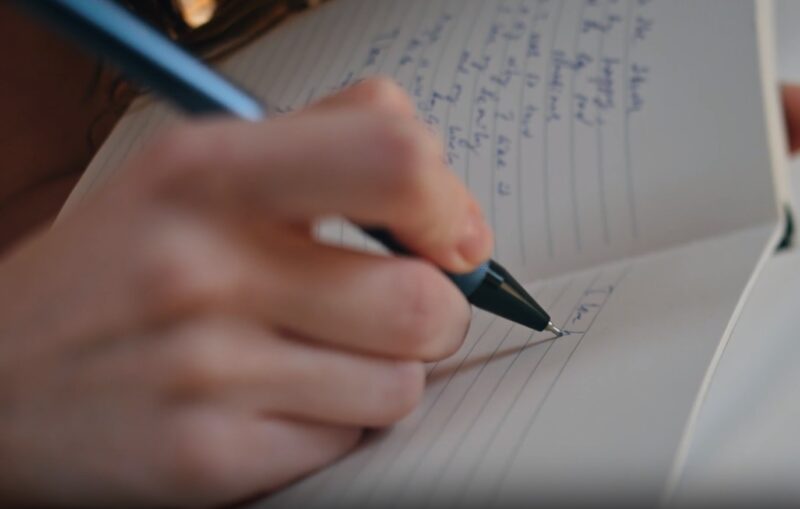Do you want to make your point clearer when you talk or write about something you’ve read? Textual evidence is your best friend. It’s all about picking up clues from a story or article that help you explain your thoughts clearly.
You can quote something exactly as it is, put it in your own words, or just sum up the main ideas. Using textual evidence is like building a solid bridge between your thoughts and the text. Let’s see how these clues can make your writing and conversations more convincing, shall we?
Key Takeaways
- Textual evidence consists of information, facts, or data extracted from a text to substantiate conclusions, arguments, or the comprehension of the material.
- There are three primary types of textual evidence: direct quotes, paraphrasing, and summaries.
- Identifying textual evidence requires active reading and critical thinking, focusing on understanding the purpose, highlighting key points, asking questions, and looking for patterns.[/su_note]
Introduction to Textual Evidence

Textual evidence refers to the pieces of information, facts, or data drawn directly from a text to support a conclusion, argument, or understanding of the material. It’s the bedrock upon which sound arguments and insightful analyses are built.
Engaging with textual evidence effectively allows readers and writers to navigate through discussions with precision, backing up claims with undeniable proof from the source material.
This engagement not only enriches the reader’s comprehension but also ensures that interpretations and conclusions are rooted in the text itself, fostering a deeper connection with the material. Moreover, it democratizes discussions by providing a common ground for debate, grounded in the text rather than personal opinion.
Types of Textual Evidence
| Type of Textual Evidence | Description | Benefits |
|---|---|---|
| Direct Quotes | Word-for-word excerpts from the text. |
|
| Paraphrasing | Rewording a section of the text in your own words. |
|
| Summaries | Condensing the main ideas of a large section of text into a concise overview. |
|
Why Does Textual Evidence Matter?
1. Supports Claims

It provides a solid foundation for your arguments, making them more persuasive. This not only strengthens the argument but also demonstrates the writer’s diligence in researching and understanding the text. It bridges the gap between theory and evidence, grounding abstract ideas in concrete examples.
2. Enhances Credibility
Using evidence from the text adds credibility to your analysis or argument. It shows that the writer is not merely speculating but is instead basing their conclusions on documented facts or statements. This reliance on textual evidence can significantly boost the writer’s authority and the persuasiveness of their argument.
3. Fosters Understanding

It helps readers grasp complex ideas by referring back to the source material. This direct engagement with the text aids in demystifying difficult concepts, making them more approachable and understandable. It also encourages readers to return to the original material with a new perspective or insight.
4. Encourages Critical Thinking
The process of finding and evaluating evidence sharpens critical thinking skills. It challenges readers and writers to go beyond superficial readings, prompting deeper analysis and reflection. This critical engagement fosters a more active and questioning approach to texts, cultivating a more nuanced understanding of the material.
How to Identify It?

- Understand Your Purpose: Know what you’re looking for in the text, whether it’s support for an argument or understanding a theme. This focus guides your reading and helps in identifying the most relevant evidence. It acts as a lens through which to view the text, highlighting pertinent details that might otherwise go unnoticed.
- Highlight Key Points: As you read, highlight or note down important passages that relate to your purpose. This practice not only aids in retention but also creates a repository of evidence that can be referenced throughout your analysis. It makes the process of gathering evidence more systematic and efficient.
- Ask Questions: Question the text’s assertions, themes, and arguments to uncover layers of meaning. This inquisitive approach can reveal connections and nuances that are essential for a comprehensive understanding. It propels the reader into a dialogue with the text, where evidence is not just collected but also interrogated.
- Look for Patterns: Identify recurring themes, symbols, or motifs that support the text’s central ideas. Recognizing these patterns can unlock deeper meanings and insights, providing a richer pool of evidence for analysis. It demonstrates an engagement with the text that goes beyond the surface, uncovering the underlying structure that shapes the narrative or argument.
Examples of Textual Evidence in Use

In Literature Analysis
Imagine you’re analyzing the theme of ambition in “Macbeth” by William Shakespeare. You might use a direct quote to illustrate Macbeth’s thirst for power:
“I have no spur to prick the sides of my intent, but only vaulting ambition, which o’erleaps itself and falls on the other.”
This quote directly supports the argument that Macbeth’s downfall is driven by his ambition, providing a concrete example from the text to back up your analysis. It allows readers to see exactly how Shakespeare conveys Macbeth’s motivations, adding depth to the analysis.
Additionally, the direct quote serves as a springboard for further discussion about the consequences of unchecked ambition, linking the specific to the universal.
In Academic Writing
In a research paper on climate change, you could paraphrase findings from a scientific study to support your argument about the rapid melting of polar ice caps:
A 2020 study found that polar ice caps are melting at a rate six times faster than in the 1990s, significantly contributing to sea level rise.
By paraphrasing the study’s findings, you incorporate critical evidence into your paper, strengthening your argument with data drawn from reputable research. This approach makes the information more digestible and tailored to your specific argument, demonstrating your ability to synthesize complex data.
Furthermore, it situates your argument within the broader scientific discourse, showcasing your engagement with current research.
FAQs
Are there any common mistakes to avoid when using direct quotes as textual evidence?
A common mistake is misquoting or taking quotes out of context, which can distort the original meaning. Always ensure accuracy and provide enough context to preserve the author’s intended message.
Can paraphrasing be used in all types of writing, or is it more suited to specific genres?
Paraphrasing can be effectively used in all types of writing, from academic and professional to creative. It’s particularly useful when you need to simplify complex ideas or integrate information seamlessly into your own narrative.
Is it necessary to cite the source when summarizing a large section of text?
Yes, it’s essential to cite the source when summarizing, just as with direct quotes and paraphrasing. This practice attributes the original ideas to their authors and helps avoid plagiarism.
How do you choose between using a direct quote, paraphrasing, or summarizing when presenting textual evidence?
The choice depends on your objective: use a direct quote to convey the author’s tone or specific language, paraphrase to clarify and simplify, and summarize to present the gist of a large section while connecting it to your argument or analysis.
Can textual evidence from multiple sources be combined in a single argument or analysis?
Absolutely, combining textual evidence from multiple sources can strengthen an argument or analysis by showing a consensus or a range of perspectives on the topic. It’s crucial, however, to integrate and cite these sources coherently to maintain clarity and credibility.
Summary
The use of textual evidence will completely transform your reading and writing experience. It not only enriches your engagement with texts but also empowers you to construct compelling, evidence-based arguments.
Whether through direct quotes, paraphrases, or summaries, incorporating textual evidence is a skill that enhances your credibility, sharpens your analytical abilities, and deepens your understanding of the material.
